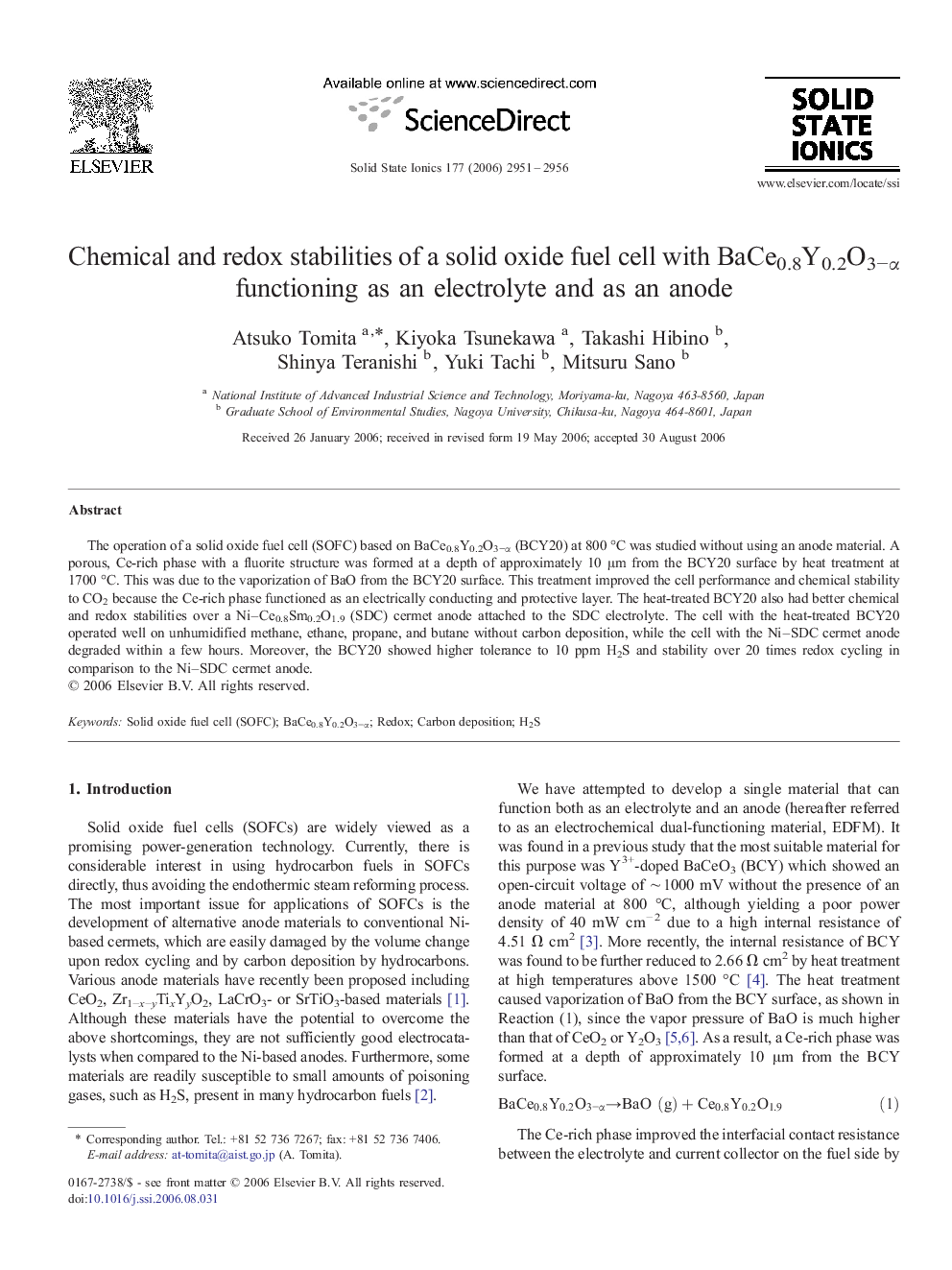| Article ID | Journal | Published Year | Pages | File Type |
|---|---|---|---|---|
| 1297220 | Solid State Ionics | 2006 | 6 Pages |
The operation of a solid oxide fuel cell (SOFC) based on BaCe0.8Y0.2O3−α (BCY20) at 800 °C was studied without using an anode material. A porous, Ce-rich phase with a fluorite structure was formed at a depth of approximately 10 μm from the BCY20 surface by heat treatment at 1700 °C. This was due to the vaporization of BaO from the BCY20 surface. This treatment improved the cell performance and chemical stability to CO2 because the Ce-rich phase functioned as an electrically conducting and protective layer. The heat-treated BCY20 also had better chemical and redox stabilities over a Ni–Ce0.8Sm0.2O1.9 (SDC) cermet anode attached to the SDC electrolyte. The cell with the heat-treated BCY20 operated well on unhumidified methane, ethane, propane, and butane without carbon deposition, while the cell with the Ni–SDC cermet anode degraded within a few hours. Moreover, the BCY20 showed higher tolerance to 10 ppm H2S and stability over 20 times redox cycling in comparison to the Ni–SDC cermet anode.
